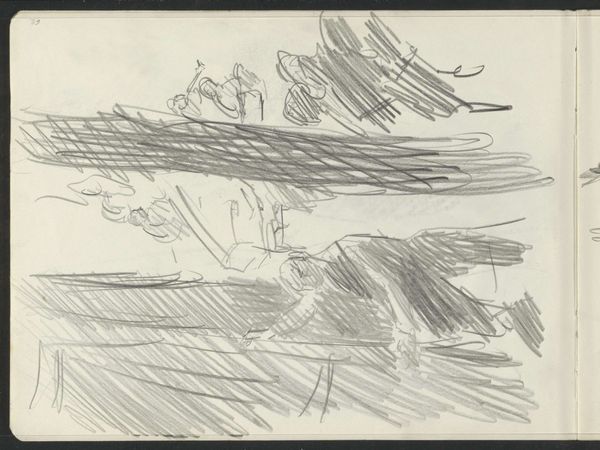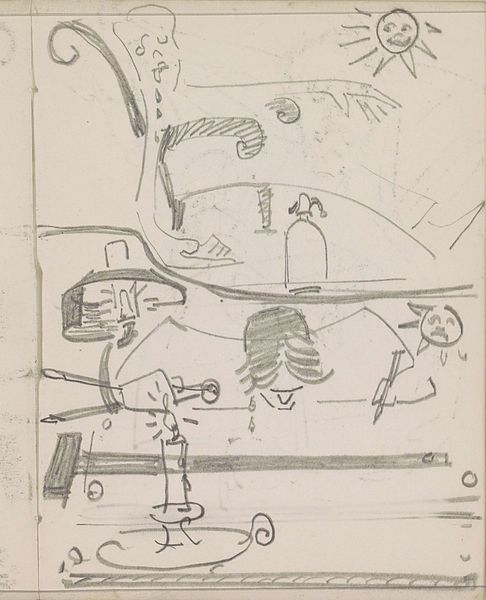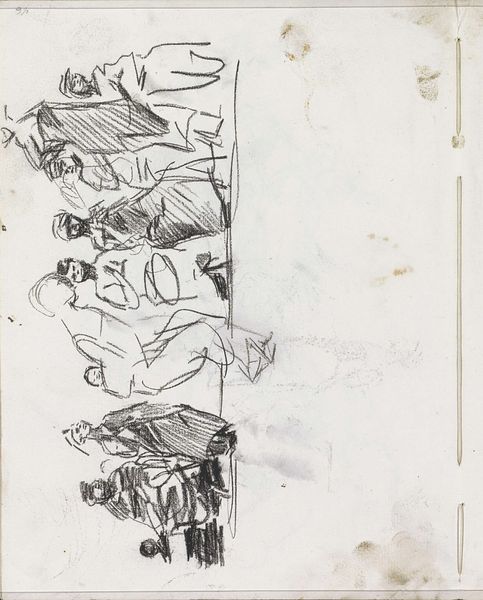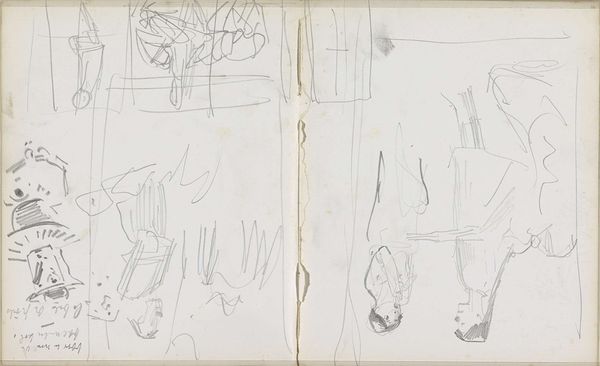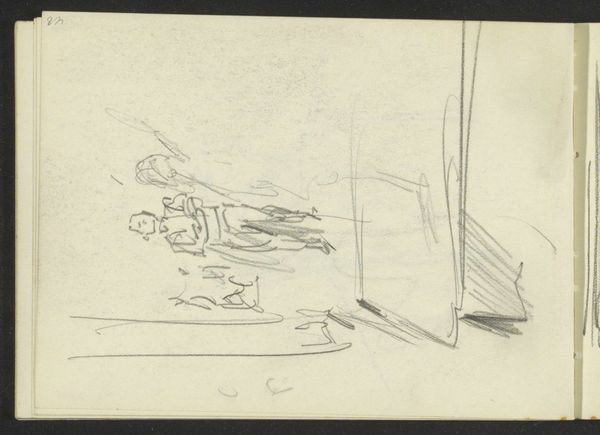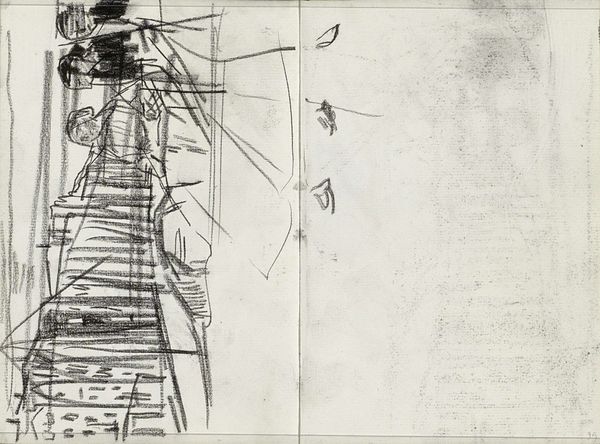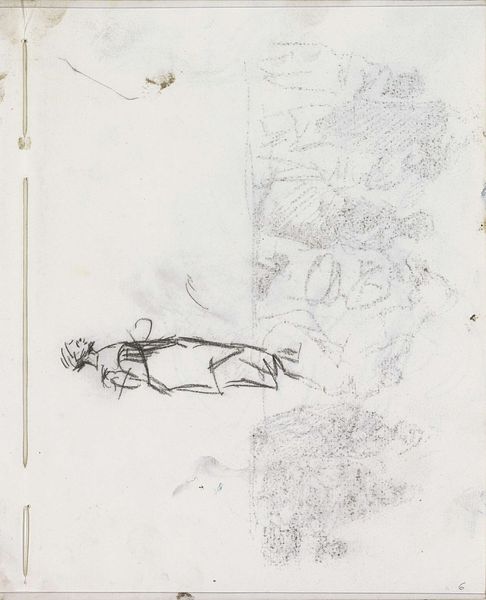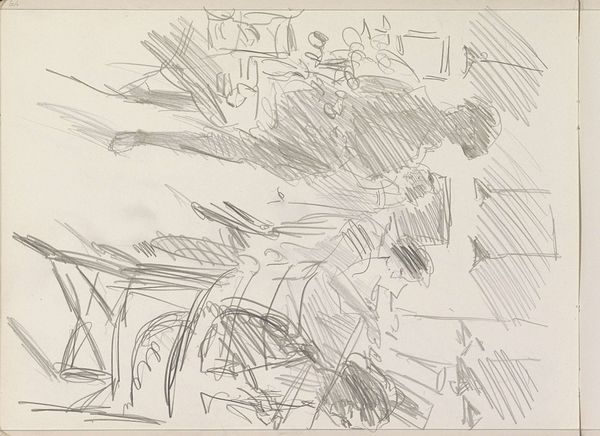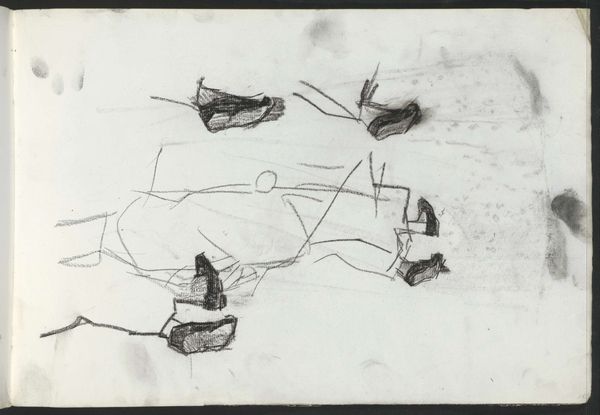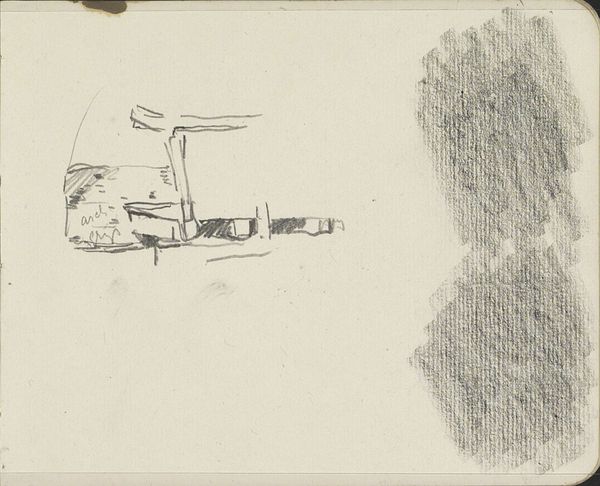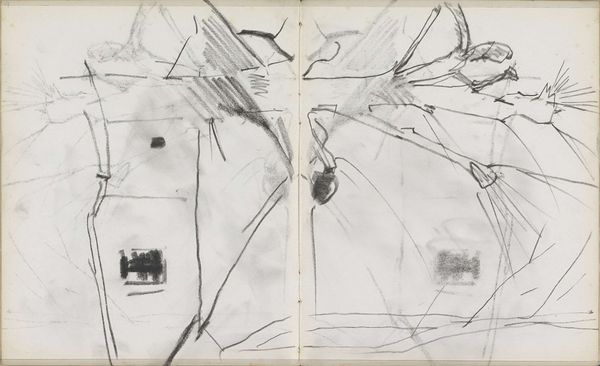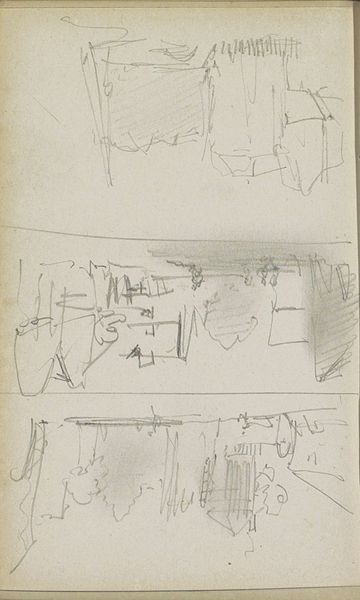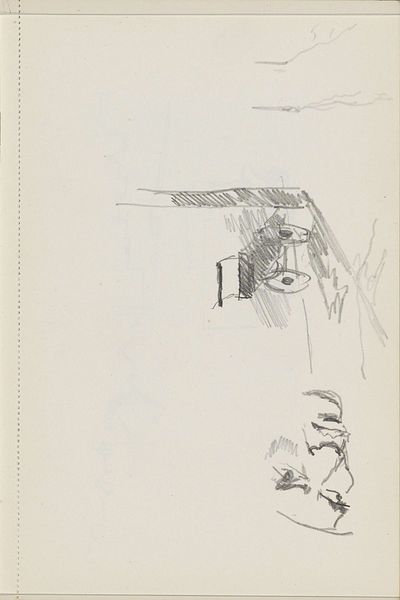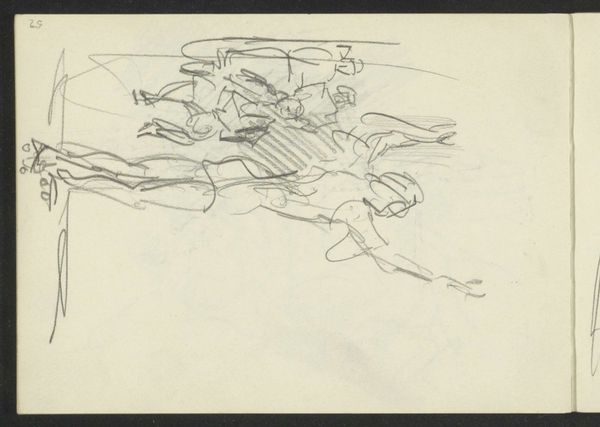
Dimensions: overall: 25.2 x 20100 cm (9 15/16 x 7913 3/8 in.)
Copyright: National Gallery of Art: CC0 1.0
Curator: Here we have Robert Frank’s gelatin silver print, "Family--Wellfleet 5," possibly from 1962. Editor: The atmosphere feels grainy and nostalgic, almost melancholic. A series of snapshots of people on a beach, with a subdued quality to the monochromatic tones. Curator: Precisely. What we are observing here is a contact sheet. This gives insight into Frank’s working process, displaying a number of related images, and, perhaps, gives hints to the images that resonated most to him. He would have used a large format camera, which could output negatives the same size as the final print. This is different from darkroom enlargements where a smaller negative is projected onto photo paper, to create a bigger final image. This materiality impacts how we interpret the work. Editor: The mundane nature of the imagery juxtaposed against the gritty texture is quite compelling, especially when viewed through the lens of the early 1960s, before the full explosion of Pop Art and during the time of the Civil Rights Movement. I find myself wondering about the stories of these people. What socioeconomic class were they a part of? Did they, and could they, see themselves as being “American” within the larger political landscape? I am particularly drawn to the presence of the flag. Is Frank making a statement about American ideals versus the everyday reality of lived experience? Curator: The choice of gelatin silver print serves the aesthetic while keeping the costs down for mass reproduction, democratizing access to these images for various audiences, think newspapers and magazines. And regarding your point, in this photograph, as well as others of Frank, it really emphasizes the availability of art, making his process quite raw and accessible. It challenges typical photography styles. Editor: The fragmented narrative presented on this contact sheet allows us to question notions of the traditional, idealized family, highlighting the ordinary, and even awkward, moments of everyday life in postwar America. Curator: Indeed. And viewing the work as a whole object moves away from this specific narrative, which allows the photograph itself to be accessible on multiple levels. Editor: This makes you contemplate Frank's approach as less of an art object and more of a piece of visual social commentary. Curator: Precisely! The materiality emphasizes that idea. Thank you for your illuminating comments. Editor: It's been a pleasure.
Comments
No comments
Be the first to comment and join the conversation on the ultimate creative platform.
